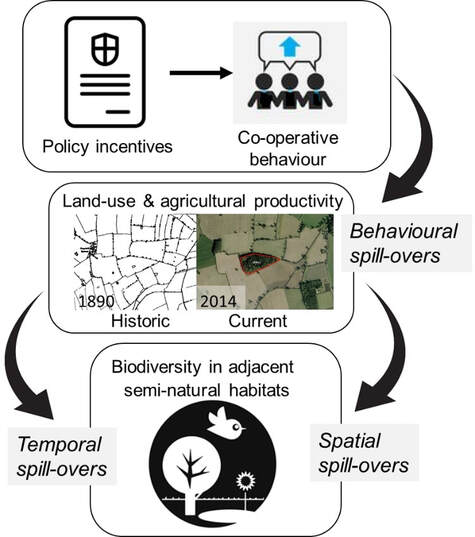In this Leverhulme funded project, the WrEN team have joined forces with Prof. Nick Hanley at Glasgow and Dr Tom Finch at RSPB. We are employing a combination of ecological science with economics to quantify the biodiversity consequences and economic costs of competing landscape-scale conservation strategies.
There is currently much debate on how to conserve biodiversity in agricultural landscapes, but understanding how to achieve this effectively is undermined by a lack of information on three types of spill-over effects (Fig. 1): spatial (effects of adjacent agriculture on wildlife in adjacent semi-natural habitats), temporal (arising the effects of past land use on current biodiversity) and behavioural (e.g. landowner decisions).
We are using a variety of data sources on biodiversity in agricultural landscapes (including the WrEN project), maps of agricultural intensity land-use, national farm data and historic land-use maps. We will explicitly incorporate ecological and economic spill-overs in an integrated model to examine the effects of landscape-level biodiversity conservation strategies.
There is currently much debate on how to conserve biodiversity in agricultural landscapes, but understanding how to achieve this effectively is undermined by a lack of information on three types of spill-over effects (Fig. 1): spatial (effects of adjacent agriculture on wildlife in adjacent semi-natural habitats), temporal (arising the effects of past land use on current biodiversity) and behavioural (e.g. landowner decisions).
We are using a variety of data sources on biodiversity in agricultural landscapes (including the WrEN project), maps of agricultural intensity land-use, national farm data and historic land-use maps. We will explicitly incorporate ecological and economic spill-overs in an integrated model to examine the effects of landscape-level biodiversity conservation strategies.

